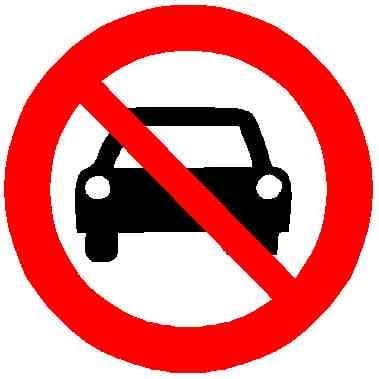

Aquaman.


Aquaman.


Broadcast TV is already going that way. ATSC 3 requires an internet connection to get decoding keys. For your protection, of course.


Perhaps today you’ll also learn about Hellschreiber. Old tech is really clever!


Yep. My consumer concerns are less of retail sticker-shock than people not realizing how dependent they are on consumer surplus. Even a few thousand a year in tariff related expenditure can be quite impactful on comfort.
Sticker-shock will happen with the tariff-adjacent removal of de minimis. Right now it’s China, but it was threatened against Canada and Mexico too (officially delayed, whatever that may mean). A $50 per-item charge is going to be quite a surprise to many.
E.g. if Canada is going to be levied like China, then my plan of getting a pair of oversized Cam-Lock kits for my Canadian-made Arkel bike panniers is gone out the window. There’s no way I’ll buy small parts when the total package cost is the same as getting a whole new set of panniers.


Correct, tariffs are not a consumption tax. That fact doesn’t mean prices will not increase, nor does it mean that small increases don’t have a big impact. We, the common people, will have have to go about our lives with less. Maybe wear your shirts an extra day because laundering more regularly consumes more soap. Perhaps it’s going without avocado on your lunch sandwiches. You’ll still have shirts and sandwiches, but you certainly wouldn’t be as clean or as filled. (See the “surplus” chapter of your high-school/undergrad econ books.)
What an absolute beauty of a bike and a story.
I think I recognize that dock. Port Townsend? Should you know the area, what sort of good biking is in the area? I often find myself in Sequim and Port Angeles with time to kill. So far I’ve only done the ODT between the two and could use some suggestions for great rides.


Why are we still doing this?
Because there’s a lot of money in it. 10.3% of the US workforce works in transportation and warehousing. Trucking alone is the #4 spot in that sector (1.2 million jobs in heavy trucks and trailers). Couriers and delivery also ranks highly.
The self-driving vehicles are targeting whole markets and the value of the industry is hard to underestimate. And yes, even transit is being targeted (and being implemented; see South Korea’s A21 line). There’s a lot of crossover with trucking and buses, not to mention that 42% of transit drivers are 55+ in age. Hiring for metro drivers is insanely hard right now.

A similar situation to me then. The speed really picks up when going downhill, especially on a heavier bike like an ebike! I’ve done 45 mph on my recumbent without any effort. At least I was keeping up with the cars!
I have one more recommendation then: stress test your brakes! I’ve burned up a few sets of pads, even bluing out a set of rotors. Breaking power drops as the rotor temperature gets higher (“fade”) and I’ve nearly lost all my brake power before. You know, like at the end of a hill where there’s a busy intersection controlled only by stop signs. Fun.
Make sure you can stop with plenty of brake power left at the bottom of your hills. If you find it lacking, then consider harder pads and the associated rotors that can handle the pads. Mountain bike pads, semi for full metallic, are a good place to look. Careful with the extra hard pads (full metal/ceramic) because they must be matched with a rotor that can handle such a hard compound.

I feel pretty safe with all this but it still honestly scares the crap out of me riding at 30+mph with cars.
30mph is pretty cooking. I only get up to those speeds when I’m riding downhill (thanks 18% grades). If you can, especially when not on the road with cars, try slowing down a bit. A 20mph collision (or allision) is much safer than at 30.
At 30mph speeds, definitely look at motorcycle gear. Illuminate your bike (good rear and front lights). Consider a mirror on your handle bars or helmet. Maybe take some online courses on how to ride a motorbike and translate it to your fat bike.
FortNine did a nice little short about this space, though mostly so folks stop pestering motorcyclists about the danger on the roads. The reality is the cars are the danger for both motorized bikes and pedal bikes. Defensive techniques are your only option.


They’re definitely keeping all the old comments, even if you “delete” them. What an edit is doing is making a new version of a comment. While this seems strange, it’s literally easier to do on a technical level and provides a layer of safety if there’s a bug in the code (allows recovery to previous data).
Honestly, this seems like a good move from Reddit. If they believe they’re removing a bad actor by a ban, then of course they’re going to prevent a bad actor from interacting on their stuff. Allowing edits post-ban for abuse is not a good outcome.
Don’t like it? Angry at Reddit? Leave and never interact with them again. Pulling that bandage off will sting but you’ll be better off for it.


I completely agree. Public access to transport can be such a joke that it forces disabled people who shouldn’t be driving to be driving, like the case here with Corsiglia. They didn’t have a choice so they committed murder in order to find existence beyond being jailed in their own home. A real-life Shakespearean tragedy.
Continuing to push for disabled parking at places where parking in the first place doesn’t make sense encourages driving and discourages public transport. It’s actually harmful to ask for disabled parking because it takes away from the greater disabled group and places the general public at risk.
All that said, there are situations where it’s OK to demand disabled parking. When a public project clearly is going to include a parking structure, demand disabled parking in high quantities. Demand at-grade and wide zones at these spaces. Demand escalators and elevators. Fight for equal access. I would be there on your side.
PS: Thanks for engaging and listening. This is a topic that often doesn’t get the attention it deserves and typically devolves into some kind of public virtue signalling. The devil is in the details.


You cannot dive and yet in the very first picture of the station in the OP’s article is a passenger loading and unloading zone at the gates. How could this train station’s design prioritization unduly harm your own disability since they picked a design where you could be dropped off at the entrance? I’m actually curious here because I can drive and I would be harmed (no parking for me) yet I’m willing to let it go in favor of things like front-gate drop-off zones for public and private loading.
You’re absolutely right that different people do have different needs but priority must be given on every project. Not including disabled parking is a choice that does not unduly harm disabled people. Including disabled parking can harm disabled people. Let me explain.
Prioritizing private car infrastructure necessarily means de-prioritizing non-car infrastructure, like these loading zones. Maybe they can shrink the loading zone a bit and get a parking spot or two in, but would that be enough for those who can drive? Maybe they can put the parking in the back, but that’s not every disabled friendly either. A parking structure could address some of that, but where’s that money coming from? Remember, there’s a limited budget and limited land availability. What’s being taken away for that disabled parking?
Prioritization of parking appears harmless on the surface but manifests in unusual ways, which is precisely why I chose “San Bruno Man With Seizure Disorder Found Guilty In Double Fatal Car Crash” as a case-in-point. The disabled man in question, Rodney Corsiglia, felt forced to drive despite multiple doctor interventions and the DMV revoking his license.
Dr. Austin told Corsiglia he should not be driving because his seizures were not controlled and he did not have full awareness of them. Corsiglia had difficulty accepting the recommendation and wanted to drive because he lived alone, felt he needed a car for transportation, and had a new truck even though he did not have a driver’s license.
– People v. Corsiglia, A145944 (Cal. Ct. App. Mar. 7, 2017)
Being a local in the area, I fully understand Corsiglia’s argument and he has a point. There are no protected bike lanes, the sidewalks are a mess, there’s exactly one bus every hour that’s daytime only to the train station across the street from where the collision occurred. There’s no way he can reasonably function without a car, which is good because the train station where he murdered two people does have disabled parking. And that’s the issue: San Bruno prioritizes disabled drivers while excluding every other disabled member. It’s a decision the city, county, and state can and often makes. It’s also a decision that killed.
Pushing the “what about the disabled people” is exactly how cars get prioritized above people’s needs, disabled and abled alike. It’s counter-intuitive but pushing disabled parking and induces parking demand which, even in totally unreasonable circumstances, pushes disabled people to drive even when they shouldn’t need to.


Like blind people? Or those who cannot afford a mobility van because a 10 year old used one is priced at $35k? Perhaps you mean those who suffer from seizures?
Let’s focus our limited budget into personal vehicle infrastructure that certainly wouldn’t force these suffering people to drive. It works, bro. Trust me.


This is a good, and quite common, question regarding congestion pricing. The fact of the matter is those with less means often cannot afford a car. It’s usually not their car if they’re driving into a city (e.g. a work truck).
But let’s say we have low-income people who do have a car and need to drive for whatever reason. There’s programs for that. Two of them.
Congestion pricing is also funneling money into metro services, meaning the affluent drivers are actually making low-income access to transportation cheaper while also improving reliability and service levels to those riding transit.
Low-income residents stand to win the most with congestion pricing. Personally, I would focus more on how to better help businesses with legitimate car needs, like dog groomers, mobile mechanics, delivery workers, etc. For example, zero fare for businesses licenses at nighttime periods (to encourage shifting delivery schedules). Programs like that could help small business, which in turn helps boost the income of low-income employees.

Given the username, I’d say that is the case: https://terptheatre.org/
"TerpTheatre is both a source of information about theatre interpreting and a tradition of theatre interpreters in the shadowed strategy. "


I’m not a fan of this article, mostly because Evan Christenson contemplates the darker side of charities working in underdeveloped countries without actually exploring them beyond criticizing WBR. It’s, likely unintentional, FUD propaganda.
It should not be a shock to find out that charities have overhead and many of them have unfortunate side effects. For example, Evan brings up Doctors Without Borders as a charity with lower overhead and a leader less compensated. That’s true, but did you also know they sell your personal information when you donate to them? That’s part of how they lower their costs. Also they provide doctor services for free. What does that do to the doctors who are there trying to make a meager living? DWB is undermining what little medical infrastructure the country has.
Is that a bad thing? Is it a good thing? That depends on you, the donor’s, perspective. Selling my data to provide more doctor is fine with me. Same with undermining the countries’ medical market because it’s a temporary thing and usually in a crisis where not providing help is definitively worse.
I’ll continue donating to WBR because their expense ratio is acceptable, even good, for physical good imports given the shipping overhead (aka bribes) in Africa. Admim is ~15% and fundraising is ~23%. Everything else goes into the bicycle and into families with kids who cannot afford one. That’s a lower margin than buying just about any good from your local shops, and it’s lower than many other charities working in Africa!


The recoil wouldn’t be that bad. Apparently the M1895 was loaded with 6mm Lee Navy at around 2,200J muzzle velocity and a cyclic fire of 450/sec. That’s quite manageable. In comparison, the M249 is a shoulder mounted gun of 1,800J, 850/min. That’s 50% more recoil to manage without a bicycle frame to support the firearm.
Oof. You definitely were taking a risk with that drive train. I’m glad the worst of it is a few broken spokes.
That’s clearly have a working bike, not some sort of weekend roadie show piece. Put a dork disk on there! There isn’t any shame in favoring function over form.
Awesome call-out on zip ties. They’re the duct tape of the bike world.
One small thing I noticed is how your fender and rack are mounted. It’s fine to share a single eyelet to mount both, but it’s best to mount in the order of frame, rack, fender, washer, and bolt. That ordering shortens the cantilever of the rack load, a much higher load than a fender, on the bolt.
I wanted to upvote this twice. Instead I’ll leave this comment.
Great rant. Would read again.